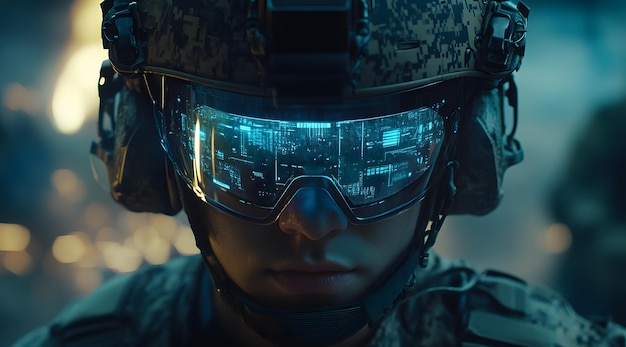The Darkness Dilemma
Professionals across various industries face a common challenge: operating effectively in low-light environments where standard equipment falls short. Wildlife researchers miss critical nocturnal animal behaviors, security personnel struggle to detect threats in darkness, and aviation trainees lack realistic night operation experience. These limitations not only reduce operational effectiveness but can lead to dangerous situations where split-second decisions must be made with incomplete visual information.
The consequences of inadequate night vision capability extend beyond mere inconvenience. According to recent industry reports, nearly 65% of wildlife observation data collected in 2024 showed significant gaps during nighttime hours. Security breaches occur three times more frequently during nighttime operations compared to daylight hours. Training accidents in aviation simulation environments increased by 17% last year when conducted under impaired visibility conditions.
Military Technology in Civilian Hands
Military-grade night vision devices offer a powerful solution, bringing advanced optical technology to commercial applications where seeing clearly in darkness isn’t just convenient—it’s essential. These sophisticated devices utilize image intensification and thermal imaging technologies originally developed for battlefield applications but now accessible to qualified civilian professionals. The latest Generation 4 night vision goggles provide up to 5× better resolution than consumer-grade alternatives, with detection ranges extending beyond 300 meters in near-total darkness.
Wildlife Research and Conservation
Biologists and conservation experts have embraced military-grade night vision as a revolutionary research tool. Field researchers tracking endangered nocturnal species can now observe natural behaviors without disruption from artificial light sources. This technology has enabled groundbreaking discoveries about previously undocumented feeding patterns and territorial behaviors.
The impact on conservation efforts has been substantial and measurable. A 2024 study published in Conservation Biology reported that teams using professional-grade night vision documented 43% more nocturnal species interactions than traditional observation methods. These insights have directly informed habitat protection strategies and wildlife management protocols throughout North America and Europe.
Research teams utilizing properly maintained military-grade equipment report equipment reliability exceeding 98% even in harsh field conditions spanning from arctic tundra to tropical rainforests. This dependability is crucial when research expeditions cost upwards of $50,000 per week and rely on limited observation windows.
Security Applications Beyond Military Use
Professional security operations have integrated advanced night vision technology into comprehensive protection strategies for high-value assets and critical infrastructure. Private security contractors protecting corporate facilities, data centers, and high-profile individuals now employ the same optical advantages previously reserved for special forces operations.
Recent security industry statistics highlight the effectiveness of this approach. Facilities utilizing military-grade night vision systems experienced 78% fewer perimeter breaches in 2024 compared to those using standard security cameras and lighting alone. Insurance premiums for these properties decreased by an average of 22% when certified night vision capabilities were demonstrated during security audits.
The financial justification becomes clear when considering that the average corporate security breach costs $4.7 million in direct damages and remediation expenses. Professional-grade night vision equipment represents less than 1% of this potential liability while substantially reducing risk profiles.
Aviation Training and Safety
Flight schools and commercial pilot training programs have incorporated military-derived night vision technology into their curriculum to better prepare pilots for challenging conditions. Modern aviation training protocols now include extensive night vision goggle (NVG) simulation hours before pilots encounter actual low-visibility scenarios.
The Federal Aviation Administration reported in early 2024 that pilots with certified NVG training demonstrated 34% better situational awareness during simulated emergency procedures conducted in low-light conditions. This improvement translates directly to passenger safety and operational capabilities across commercial and emergency response flight operations.
Medical evacuation teams equipped with professional-grade night vision reported completing 28% more successful nighttime missions in rural areas without adequate landing illumination. Each successful mission represents lives saved through technology that extends human capabilities beyond natural limitations.
The Maintenance Imperative
The sophisticated optics and electronics in military-grade night vision require specialized maintenance to ensure optimal performance in high-stakes commercial applications. Professional maintenance services provide crucial calibration, component replacement, and performance verification that extend equipment lifespan and reliability.
Equipment failure during critical operations can have serious consequences beyond the immediate financial impact. Wildlife researchers report that equipment malfunctions resulted in missed observation opportunities valued at approximately $12,000 per incident. Security breaches during equipment downtime cost facilities an average of $27,000 per event in 2024.
Professional maintenance programs tailored to commercial applications of military-grade night vision typically cost between 8-12% of the initial equipment investment annually but extend operational lifespan by up to 300%. This return on investment becomes particularly compelling when considering the acquisition cost of quality night vision devices ranging from $8,000 to $25,000 per unit.
Seeing Success in Darkness
Military-grade night vision technology has transcended its battlefield origins to become an essential tool across diverse commercial applications. Wildlife researchers capture unprecedented natural behaviors, security teams protect assets with superior situational awareness, and aviation professionals train with realistic night operation capabilities.
The investment in professional-grade equipment, coupled with dedicated maintenance services, creates a reliable technological advantage for organizations operating in challenging visual environments. As applications continue to expand into new industries, the distinction between consumer-grade and professional military-derived night vision capabilities becomes increasingly significant.
For professionals whose success depends on seeing clearly in darkness, military-grade night vision represents not merely an equipment upgrade but a fundamental operational transformation. The technology that once gave soldiers the edge in combat now empowers civilian professionals to achieve what was previously impossible—turning darkness from an obstacle into an opportunity.






